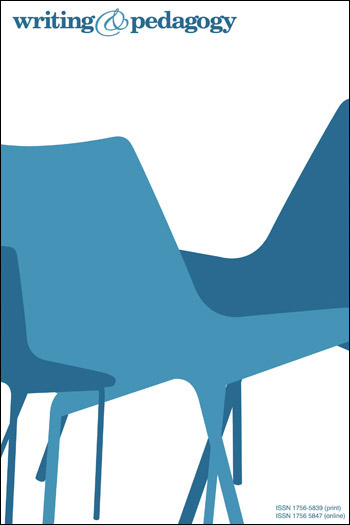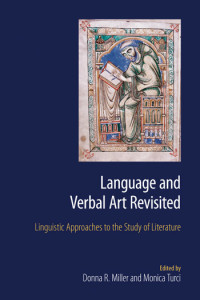Playing with Words
Humour in the English Language
Barry Blake [+–]
La Trobe University (retired)
Barry Blake retired from the position of Foundation Professor of Linguistics at La Trobe University, Melbourne, in 2003. He is the co-author of Language Typology (1981) and author of Australian Aboriginal Grammar (1987), Relational Grammar (1990), Case (1994, 2001) and several books on various Australian languages. Most of his past research has been in comparative and historical linguistics, but he is currently researching the functions of language that lie beyond the direct exchange of information, in particular humour and oblique, obscure and secret language.
Humour permeates our lives. People tell jokes, make puns, and engage in witty banter. There is written humour in headlines and captions, in ads, on signs, t-shirts, and bumper stickers, and in the form of graffiti. Nowadays humour is available on the web and circulated by e-mail.
Playing with Words shows how every facet of language is exploited for humour. Where a word has multiple meanings or sounds like another, this is the basis for puns (A boiled egg is hard to beat). The word-building rules are used for clever compounds, smart blends and catchy phrases as in ‘circulated by word of mouse’. Ambiguities in the syntax afford further scope for humour (Miners refuse to work after death), and the sounds of words can be exploited in humorous verse. There is also humour to be found in slips of the tongue, malapropisms, and funny misspellings.
Playing with Words also covers the subject matter of humour and the part it plays in society. It is an informed account in non-technical language, full of examples, a book to be read for information and for fun.
Table of Contents
Prelims
Introduction [+–] viii-xii
Humour permeates our lives. People tell jokes, make puns, and engage in witty banter. There is written humour in headlines and captions, in ads, on signs, t-shirts, and bumper stickers, and in the form of graffiti. Nowadays humour is available on the web and circulated by e-mail. Playing with Words shows how every facet of language is exploited for humour. Where a word has multiple meanings or sounds like another, this is the basis for puns (A boiled egg is hard to beat). The word-building rules are used for clever compounds, smart blends and catchy phrases as in ‘circulated by word of mouse’. Ambiguities in the syntax afford further scope for humour (Miners refuse to work after death), and the sounds of words can be exploited in humorous verse. There is also humour to be found in slips of the tongue, malapropisms, and funny misspellings. Playing with Words also covers the subject matter of humour and the part it plays in society. It is an informed account in non-technical language, full of examples, a book to be read for information and for fun.
1
The nature of humour [+–] 1-21
Topics include; Principles of humour; Satire, parody, irony, and sarcasm
2
What do people joke about? [+–] 22-47
Topics include: The cultural background; Beliefs and attitudes; Subject matter; Insults
3
Where humour is to be found [+–] 48-53
Topics include: Professional humour; Amateur humour
4
Laughs in the lexicon [+–] 54-67
Topics include: Compounds; Blends; Prefixes and suffixes; Euphemism; Colourful language; Names
5
Puns [+–] 68-80
Topics include: Basic puns; Puns across word boundaries; Puns involving phrases; Cross-language puns; Substituting a similar word
6
Grammatical ambiguities [+–] 81-94
Topics include: Which part of speech?; Scope; Participial clauses; Co-ordination; Missing subjects and objects; Pronouns and other problems of reference
7
Jokes [+–] 95-118
Topics include: Stories; Books; Blonde jokes; Cannibal jokes; Dumb jokes; Definitions; Generalizations and exhortations; Graffiti; Headlines; How many x’s does it take to change a light bulb?; Knock knock!; Oxymora and other self-contradictions; Questions; Signs; Stickers; Tom Swifties; Wellerisms; What do you get if you cross x with y?; What is the difference between x and y?
8
Wit [+–] 119-125
The terms ‘humour’ and ‘wit’ overlap. We can make a distinction, though the difference is certainly not clear-cut. Wit is cleverness with words, usually humorous, but not always. The author is demonstrating his or her verbal prowess. We are meant to admire the ingenuity, perhaps we will smile, perhaps even laugh, but if we do, that is a bonus. Since the term ‘wit’ is generally reserved for the clever end of the humour spectrum.
9
Language in context [+–] 126-130
Language is not always specific. In normal language use the speaker (or writer or signer) and the addressee are expected to be cooperative. The speaker is expected to be able to estimate what the addressee knows and does not know. If the speaker gives too little information, the addressee will not be able to interpret what was said. If the speaker gives redundant information, the addressee might be confused or insulted. There is an old joke that circulates among children, ‘Why do firemen wear red braces?’ The answer is, ‘To keep their trousers up.’ Here the person who poses the question is being uncooperative by including the adjective ‘red’ and then giving an answer in which colour is irrelevant. Teasing jokes like these are common in books of jokes for children.
10
Errors [+–] 131-154
Topics include; Slips of the tongue and mispronunciation; Accents and lisps; Malapropisms; Misinterpretations; Misspellings; Mispunctuation; Grammar as she is spoke; Logic or lack thereof
11
Rhymes [+–] 155-167
Topics include: Nursery rhymes; Children’s verses; Adult verses; Limericks; Clerihews; Verse today
12
Beyond a joke [+–] 168-170
Concluding chapter
End Matter
Notes and sources [+–] 171-173
Humour permeates our lives. People tell jokes, make puns, and engage in witty banter. There is written humour in headlines and captions, in ads, on signs, t-shirts, and bumper stickers, and in the form of graffiti. Nowadays humour is available on the web and circulated by e-mail. Playing with Words shows how every facet of language is exploited for humour. Where a word has multiple meanings or sounds like another, this is the basis for puns (A boiled egg is hard to beat). The word-building rules are used for clever compounds, smart blends and catchy phrases as in ‘circulated by word of mouse’. Ambiguities in the syntax afford further scope for humour (Miners refuse to work after death), and the sounds of words can be exploited in humorous verse. There is also humour to be found in slips of the tongue, malapropisms, and funny misspellings. Playing with Words also covers the subject matter of humour and the part it plays in society. It is an informed account in non-technical language, full of examples, a book to be read for information and for fun.
References and further reading [+–] 174-176
Humour permeates our lives. People tell jokes, make puns, and engage in witty banter. There is written humour in headlines and captions, in ads, on signs, t-shirts, and bumper stickers, and in the form of graffiti. Nowadays humour is available on the web and circulated by e-mail. Playing with Words shows how every facet of language is exploited for humour. Where a word has multiple meanings or sounds like another, this is the basis for puns (A boiled egg is hard to beat). The word-building rules are used for clever compounds, smart blends and catchy phrases as in ‘circulated by word of mouse’. Ambiguities in the syntax afford further scope for humour (Miners refuse to work after death), and the sounds of words can be exploited in humorous verse. There is also humour to be found in slips of the tongue, malapropisms, and funny misspellings. Playing with Words also covers the subject matter of humour and the part it plays in society. It is an informed account in non-technical language, full of examples, a book to be read for information and for fun.
Index [+–] 177-181
Humour permeates our lives. People tell jokes, make puns, and engage in witty banter. There is written humour in headlines and captions, in ads, on signs, t-shirts, and bumper stickers, and in the form of graffiti. Nowadays humour is available on the web and circulated by e-mail. Playing with Words shows how every facet of language is exploited for humour. Where a word has multiple meanings or sounds like another, this is the basis for puns (A boiled egg is hard to beat). The word-building rules are used for clever compounds, smart blends and catchy phrases as in ‘circulated by word of mouse’. Ambiguities in the syntax afford further scope for humour (Miners refuse to work after death), and the sounds of words can be exploited in humorous verse. There is also humour to be found in slips of the tongue, malapropisms, and funny misspellings. Playing with Words also covers the subject matter of humour and the part it plays in society. It is an informed account in non-technical language, full of examples, a book to be read for information and for fun.









